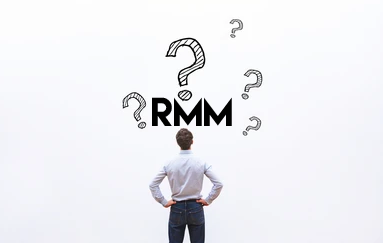As the world becomes increasingly digitized, the need for efficient and effective IT management tools continues to grow. One of the most important tools that has emerged in recent years is remote monitoring and management (RMM) software.
RMM refers to a category of software tools that enable managed service providers (MSPs) and IT departments to remotely monitor and manage endpoints such as servers, desktops, laptops, mobile devices, and other network-connected devices. The primary goal of RMM software is to enable IT professionals to maintain the health and security of their clients’ or organization’s IT systems without having to be physically present on-site.
RMM software typically provides a wide range of functionality, including:
Monitoring: RMM software is designed to monitor the health and performance of IT systems in real-time. This includes monitoring hardware performance, system utilization, network traffic, and application usage.
Alerts: RMM software generates alerts when it detects any issues that need attention. For example, it can alert IT professionals when a server’s CPU usage exceeds a certain threshold or when a device is offline.
Automation: RMM software can automate routine IT tasks, such as applying software updates, running security scans, and performing backups.
Patch management: RMM software can automate the process of applying software patches and updates, ensuring that all systems are up-to-date with the latest security and performance improvements.
Remote control: RMM software enables IT professionals to remotely access and control endpoints. This allows them to troubleshoot issues, perform maintenance tasks, and install software without having to be physically present.
Reporting: RMM software generates reports that provide detailed information on the health and performance of IT systems. This includes information on system uptime, patch status, and hardware utilization.
The benefits of RMM software are numerous. First and foremost, RMM software enables IT professionals to provide proactive maintenance and support, which can help prevent issues before they become major problems. This can improve system uptime, reduce downtime, and increase productivity.
RMM software can also help IT professionals to reduce the amount of time and resources required to manage IT systems. By automating routine tasks and providing real-time monitoring and alerts, RMM software can enable IT professionals to be more efficient and effective.
Another important benefit of RMM software is improved security. By monitoring and managing endpoints in real-time, RMM software can help identify and address security threats before they can cause damage. This includes detecting and removing malware, patching vulnerabilities, and enforcing security policies.
In conclusion, remote monitoring and management (RMM) software is a critical tool for managed service providers (MSPs) and IT departments. It enables IT professionals to remotely monitor and manage endpoints in real-time, providing proactive maintenance and support, reducing the amount of time and resources required to manage IT systems, and improving security. As the world becomes increasingly digitized, the importance of RMM software will only continue to grow, making it a must-have tool for any organization that relies on IT systems to operate.






